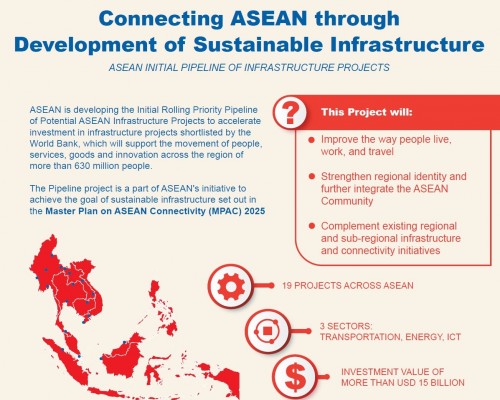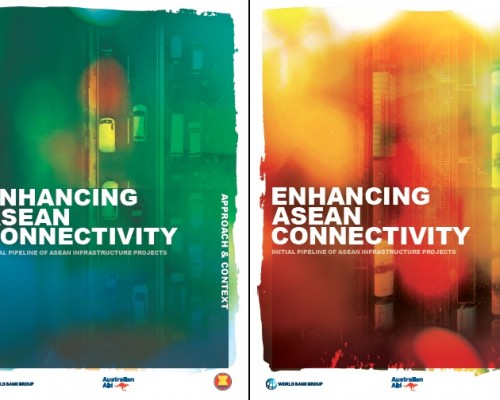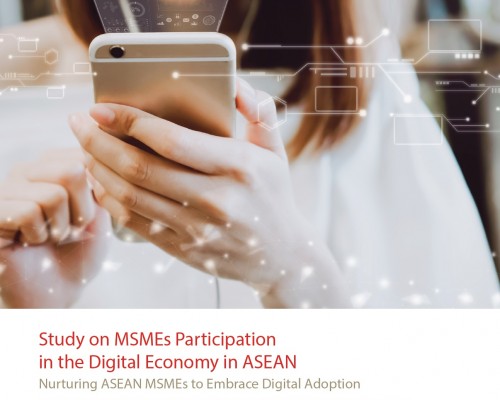Regional Efforts Related to ASEAN Connectivity

Regional Efforts | 8 January 2020
INFOGRAPHIC: ASEAN Sustainable Urbanisation Strategy (ASUS)
Around half of all ASEAN people live in urban areas, and an additional 70 million are forecast to live in ASEAN cities by 2025. ASUS provides the framework to address challenges associated with urbanisation and improve the living standards of our people. ASUS is one of ASEAN’s initiatives under the…
Read More

Regional Efforts | 6 December 2019
Infographic: ASEAN Initial Pipeline of Infrastructure Projects
ASEAN is developing the Initial Rolling Priority Pipeline of Potential ASEAN Infrastructure Projects to accelerate investment in infrastructure projects shortlisted by the World Bank, which will support the movement of people, services, goods and innovation across the region of more than 630 million people. The Pipeline project is a part…
Read More

Regional Efforts | 2 November 2019
Booklets on the Approach & Context and Project Briefs: Initial Pipeline of ASEAN Infrastructure Projects
To help accelerate investment in infrastructure in the region, the Master Plan on ASEAN Connectivity 2025 (MPAC 2025) recommended the establishment of a rolling priority pipeline list of potential ASEAN infrastructure projects and sources of funds. With the technical assistance of the World Bank and the support of the…
Read More

Regional Efforts | 28 October 2019
Study on Micro, Small, and Medium Enterprises (MSMEs) Participation in the Digital Economy in ASEAN
As ASEAN advances to become the worlds fourth largest economy by 2030, it is undergoing a transition marked by a demographic shift to a younger population, a rising middle class, and rapid adoption of technology. With many mobile-first markets in the region, ASEAN is expected to see rapid increase in…
Read More

Regional Efforts | 12 November 2018
Enhancing ASEAN Connectivity: Developing a Rolling Priority Pipeline of ASEAN Infrastructure Projects
Investment in physical infrastructure in the transport, energy, and information and communications technology (ICT) sectors will help to improve connectivity both within and between ASEAN Member States (AMS). Due to budget constraints and competing demands for resources, there is not always sufficient investment in physical infrastructure in ASEAN. As a…
Read More
